AND presents: Sound and Documentary
One-person video filmmaking, from shooting to post-production, offers anyone the chance to make a documentary without even having to go to film school. Especially in Asia, where the rare independent documentarist (not affiliated with television or government) faced political and financial pressures just two decades ago, the convenience of digital video has caused an explosion of production today. Now we can see themes and styles abound—a celebration of the diversity of images expressing views of reality. Screenings of these films are also increasing across Asia.
Compared to the days when equipment and technology forced filmmaking to be a considerable team operation, the solitude today’s iMac documentarists enjoy is in a way a luxury . . . but also a drawback. Even in a world of proliferating technical know-how, the value of integral communication with professional staff cannot be replaced.
Asian Network of Documentary (AND) programs lectures and workshops at film festivals around Asia so that solitary documentarists can benefit from practical support by senior filmmakers and technical staff. At YIDFF 2007, the program features the theme “Sound and Documentary,” and offers two lectures and two “sound clinics” for filmmakers. Too many films, eager to put forward a “message,” over-stress the visual aspects of information and language. We hope this program will open our ears to the influential power of sound in cinema.
—Fujioka Asako
Masters of Sound: Lecture 1
Oct. 9 (Tue) 10:30–12:30, Central Public Hall 4F
Speaker Pedro Costa (Filmmaker)
| Pedro Costa International Competition juror for YIDFF 2007. |
Winner of the Mayor’s Prize at YIDFF 2001, Pedro Costa’s film In Vanda’s Room was theatrically released to much acclaim in Japan. After working with a large production unit and using a 35mm camera in his previous film Ossos, Mr Costa decided to be his own cinematographer, using a video camera, and asked a friend to record sound. His crew on location never exceeded three people, and thus it became possible to “be totally without hierarchy in relation to those appearing in front of the camera.” Mr Costa will speak about the small crew and about sound in his filmmaking.
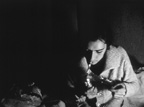
With clips from: In Vanda’s Room (2000)
One year in the life of Vanda Duarte, a woman living in a slum area in Lisbon. From beyond the thin walls we hear the sounds of people’s daily lives and of buildings being torn down; in the spartan room, Vanda’s endless coughing. A cinematic world is created through a distinct sound design.
Masters of Sound: Lecture 2
Oct. 10 (Wed) 10:30–12:30, Central Public Hall 4F
Speaker Kikuchi Nobuyuki (Sound Technician)
 Kikuchi Nobuyuki
Kikuchi NobuyukiAcclaimed sound technician traversing freely between fiction and documentary. His filmography includes: A Japanese Village—Furuyashikimura (1982, dir. Ogawa Shinsuke), Magino Village—A Tale (1986, dir. Ogawa Shinsuke), The Written Face (1995, dir. Daniel Schmidt), A Hundred-Year Scream (1998, dir. Izuchi Kishu), Nadya’s Village (1997, dir. Motohashi Seiichi), Tokyo Eyes (1998, dir. Jean-Pierre Limosin), Mangekyo (1999, dir. Kawase Naomi), M/other (1999, dir. Suwa Nobuhiro), Self and Others (2000, dir. Sato Makoto), Eureka (2001, dir. Aoyama Shinji), To the Alley: Footage Left Behind by Nakagami Kenji (2001, dir. Aoyama Shinji), Kya Ka Ra Ba A (2001, dir. Kawase Naomi), H Story (2001, dir. Suwa Nobuhiro), Flowers, for the Eight Seconds of This Life (2004, dir. Inagawa Masato), My God, My God, Why Hast Thou Forsaken Me? (2005, dir. Aoyama Shinji), Shindo (2007, dir. Hagiuda Koji), Sad Vacation (2007, dir. Aoyama Shinji), Young Yakuza (2007, dir. Jean-Pierre Limosin). |
Playing an important role in the production of The Cheese & The Worms (dir. Kato Haruyo), winner of the Ogawa Shinsuke Prize at YIDFF 2005, was accomplished soundman Kikuchi Nobuyuki. A student film at The Film School of Tokyo, this personal documentary received an in-school grant for post-production, allowing teacher Sato Makoto to invite Mr Kikuchi on board, claiming, “This is a film for sound.” After discussion with the director, Mr Kikuchi “cleaned” the track, added newly recorded sound, and made the sound track more effective for the film. At Yamagata, he will use image and sound footage from the film to examine the sound design, to identify the sound elements and why they were used, and clinically analyze the composition of the sound track.
With clips from: The Cheese & The Worms (2005)
Director: Kato HaruyoThe director returns home to take care of her mother, diagnosed with severe cancer. Believing in a miracle recovery, she begins filming with a video camera, recording ordinary life with her mother, who lives each day to her fullest, and her elderly grandmother. Through the mundane everyday, a loving attachment to life and family emerges.
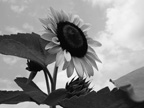
AND Sound Clinic
Oct. 9 (Tue), 10 (Wed), 14:00–17:00
Tohoku University of Art & Design, Design Lab Bldg. B, Media Arts Studio
Sound Coaches: Kikuchi Nobuyuki, David Vranken
 David Vranken
David VrankenAfter practical training on the set in production sound at film school, he turned toward the post-production processes of sound. He now divides his time between work on large-budget films and small independent films, trying to take advantage of the differences between these two worlds. He has had ties to Japan since his sound editing on The Mourning Forest (2007, dir. Kawase Naomi). |
10–15 emerging documentarists from Asia will be able to participate in two discussion sessions about “Sound and Documentary.” With Kikuchi Nobuyuki and David Vranken as coaches, filmmakers will present parts of their in-progress footage as case studies for an open-floor discussion about sound in filmmaking.
| What’s AND (Asian Network of Documentary)?
Asian Network of Documentary (AND) is a loose coalition of film-festival organizers committed to supporting the production and distribution of diverse Asian documentaries. Since 2006, the AND Fund has offered 130 million Korean won in production support to fifteen Asian documentary projects annually at the Pusan International Film Festival. In 2006, PIFF held a lecture and workshop program featuring “Editing and Documentary” as its theme. At the 2006 Thai Short Film Festival, filmmaker Sato Makoto was invited to a coaching workshop for young Thai documentarists and at the 2006 Taiwan Documentary Festival there was a panel discussion about the activities of AND. In addition to these master-class programs, AND will continue to try to increase the number of screenings of Asian documentaries within Asia, including pursuing the possibilities of a pan-Asian regular screening network. 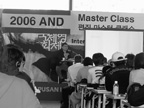
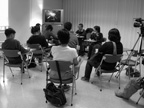
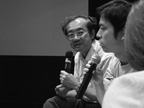
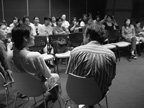
|
Soundscapes
Episodes of the longstanding NHK radio program Soundscapes, on the air since 1985, that were recorded in Yamagata Prefecture will be presented on a daily rotation in the darkness of the theater.
Held in conjunction with “AND presents: Sound and Documentary,” which proposes to reinstate the importance of audio in the production of documentaries, this project aims to get you, the cinema audience, to appreciate just how intriguing the sounds are in a documentary.
We invite you to share the unusual experience of giving a radio program your undivided attention, as you sit in a dark room with your ears open to the sounds. These short five-minute programs, composed only of the sounds recorded on location and minimal narration, will stage for us an imaginative journey around Yamagata that appeals to all of the senses rather than simply the visual.
- Soundscapes
Production: NHK Sound Design Dept.
- Morning on Mt. Haguro
1994 / Recording, Director: Kodama Takashi - Yamagata City’s Clock Tower
2001 / Recording, Director: Imai Yutaka, Inaba Mamoru - A Village in Yamagata: Hijiori Hot Springs
2002 / Recording, Director: Kodama Takashi - Mt. Yudono
2002 / Recording, Director: Kodama Takashi - On the Mogami Riverboat
2004 / Recording, Director: Kanno Hidenori
- Morning on Mt. Haguro
